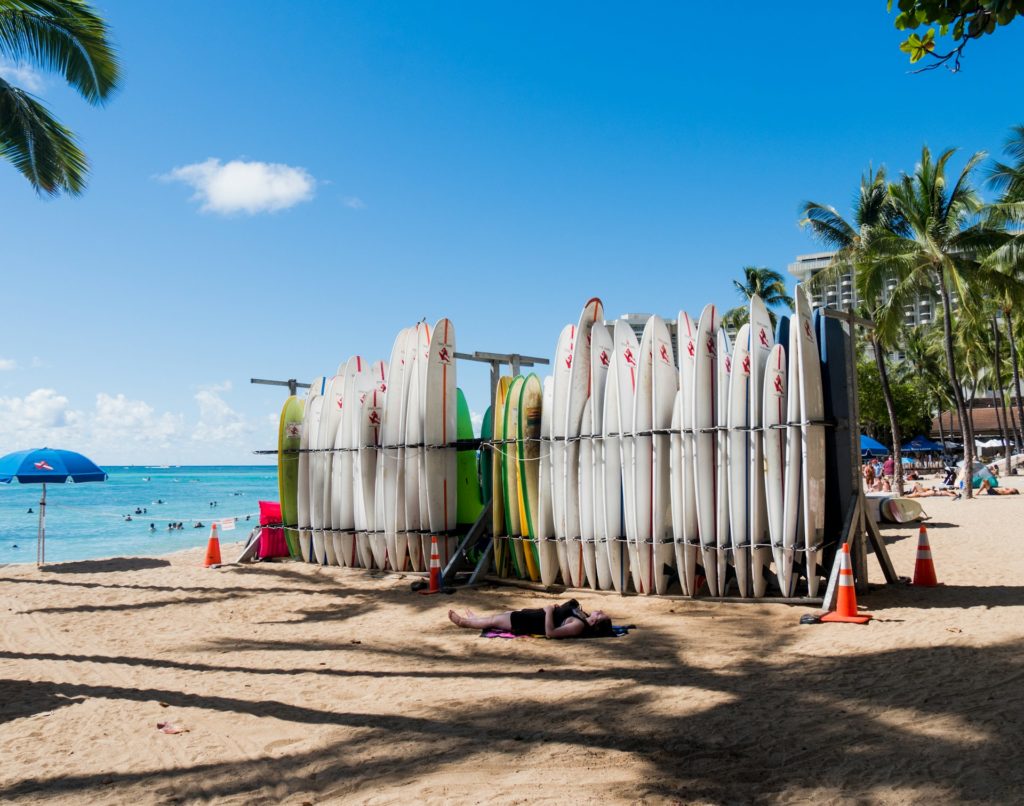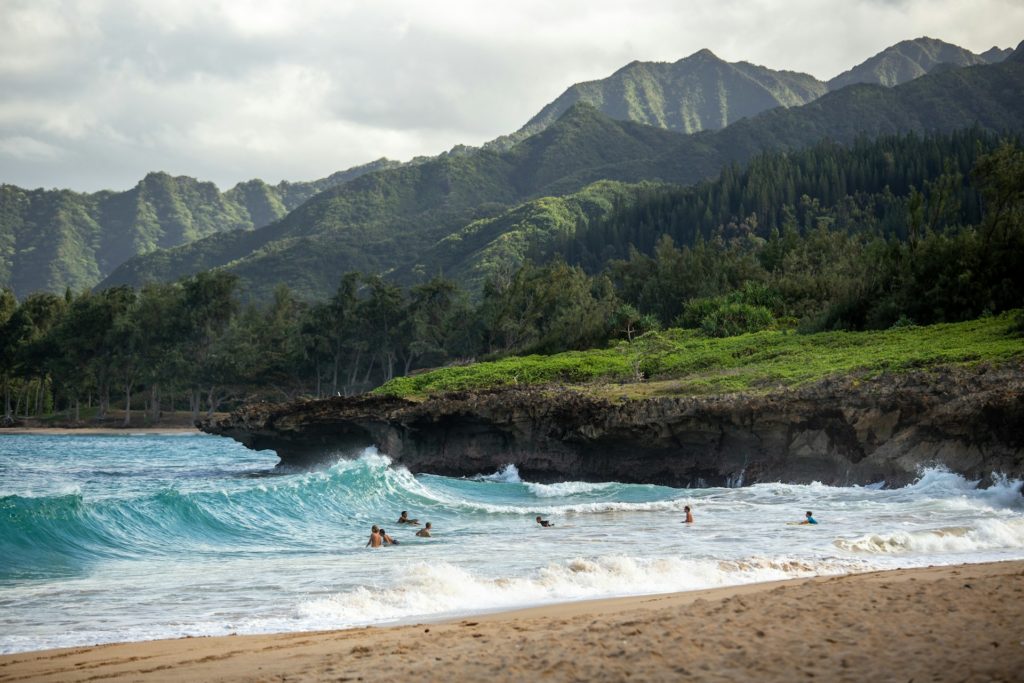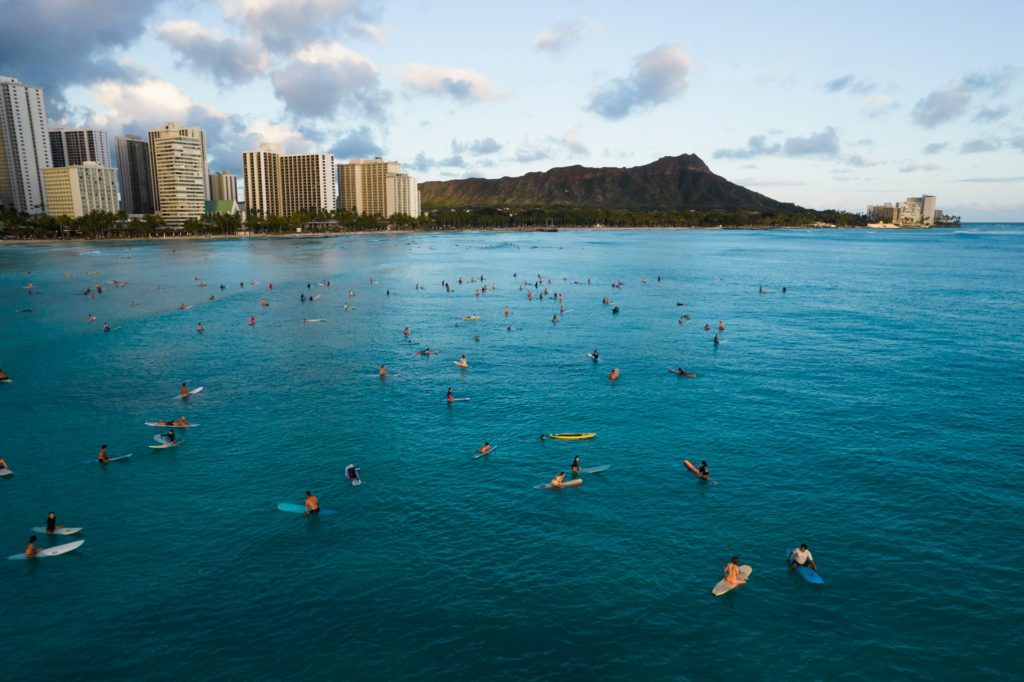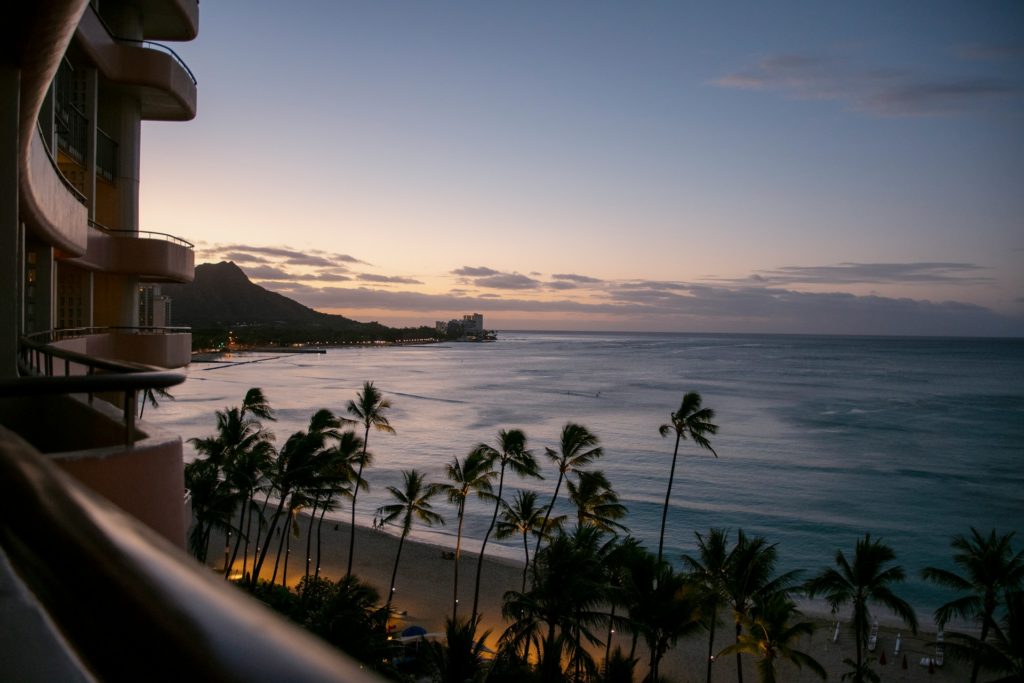Hawaii, known for its enchanting landscapes and alluring beaches, is a topic of curiosity for many. A common question arises: Is Waikiki part of the Big Island? The answer lies within Hawaii’s rich geographical tapestry. This exploration will clarify Waikiki’s location and unravel the beauty of Hawaii’s islands.
As we journey through the island chain, distinguishing each island’s unique characteristics becomes essential. The distinction between Waikiki and the Big Island is a key aspect of understanding Hawaii’s geography. Let’s delve into the island specifics and discover where Waikiki truly lies.
Understanding Hawaii’s Island Chain
Hawaii’s island chain is a crescent-shaped archipelago located in the Pacific Ocean, with each island with its own personality. The eight main islands, at the southeastern end of the chain, are the most well-known and visited. These islands have captivated travelers with their diverse ecosystems and rich cultural histories.
From the volcanic landscapes of the Big Island to the bustling city life of Oahu, the Hawaiian Islands offer a wide array of experiences. Understanding their locations and unique features is crucial for travelers looking to get the most out of their Hawaiian adventure. Now, let’s focus on the main islands and their attributes.

The Main Hawaiian Islands at a Glance
The main Hawaiian Islands include Hawaii, Maui, Oahu, Kauai, Molokai, Lanai, Niihau, and Kahoolawe, each with its own splendor.
Oahu – The Gathering Place
Oahu, affectionately called “The Gathering Place,” is the third-largest Hawaiian island and a hub of cultural and historical significance. It is home to the state’s capital, Honolulu, and the majority of Hawaii’s population. Oahu offers a blend of natural beauty and modern attractions.
From the iconic Diamond Head crater to the legendary North Shore, Oahu’s landscapes are as varied as they are stunning. The island is a melting pot of ethnicities, which is reflected in its vibrant food scene and cultural festivals. Oahu is where tradition meets modernity in Hawaii.
Big Island – Hawaii’s Largest Landmass
The Big Island, officially known as Hawaii, is the largest and youngest in the Hawaiian archipelago. It continues to grow due to the active lava flows of the Kilauea volcano. The Big Island is renowned for its vast and diverse environments, from snow-capped mountains to black sand beaches.
This island is a natural playground offering everything from star-gazing atop Mauna Kea to exploring the depths of the ocean while snorkeling at Kealakekua Bay. Its sheer size and ecological variety are unmatched, making it a microcosm of the planet’s ecosystems.
Waikiki’s Location
Waikiki is not on the Big Island, but rather on the island of Oahu. This world-famous neighborhood is located on the south shore of Honolulu, stretching from the Ala Wai Canal to Diamond Head. Waikiki is best known for its long stretch of golden sand beach, lined with high-rise hotels and retail establishments.
The area is a major tourist destination, attracting visitors from around the globe with its vibrant atmosphere and stunning oceanfront views. Waikiki’s accessibility and abundance of activities make it a focal point for those seeking a Hawaiian holiday that combines relaxation with urban convenience.
Key Features of Waikiki Beach
Waikiki Beach is celebrated for its soft sand, gentle waves, and iconic view of Diamond Head.
Beach Amenities and Activities
Waikiki Beach offers a plethora of amenities, including lifeguards, restrooms, and rental shops for surfboards and beach gear. Activities range from surfing and paddleboarding to beach volleyball and sunset hula performances, ensuring endless fun for all ages.
Cultural and Historical Sites in Waikiki
Waikiki is steeped in cultural depth, with sites like the Kuhio Beach Hula Mound and the Duke Kahanamoku Statue. Historical landmarks such as the Royal Hawaiian Hotel add to the area’s rich heritage, inviting visitors to explore its storied past.
Common Geographical Confusions Explained
Many visitors to Hawaii mistake Waikiki for a separate island or part of the Big Island due to its fame. However, Waikiki is a neighborhood in Honolulu on the island of Oahu. The Big Island is a separate entity, known for its larger landmass and distinct natural wonders.
To avoid confusion, remember that the Big Island’s official name is Hawaii and it is the largest island of the state. Waikiki, on the other hand, is a slice of Oahu’s bustling city life, offering a different Hawaiian experience with its urban beach setting. Understanding this distinction enhances the appreciation of Hawaii’s diverse offerings.
Oahu’s Pride: Honolulu and Waikiki
The vibrant energy of Honolulu and the allure of Waikiki make them the pride of Oahu, drawing visitors to their dynamic shores.
Honolulu – The State Capital
Honolulu, the bustling state capital, is the gateway to Hawaii and a melting pot of East and West cultures. The city is home to historic landmarks, world-class shopping, and a thriving arts scene.
Waikiki – A World-Famous Destination
Waikiki is synonymous with Hawaiian vacations. Its famed beach, luxury hotels, and endless entertainment options create a paradise for tourists seeking both adventure and relaxation.

Island Highlights Beyond Waikiki
While Waikiki captivates many, the Hawaiian Islands offer a wealth of attractions beyond its sandy shores, from the lush landscapes of Kauai to the volcanic wonders of the Big Island.
Exploring the Big Island’s Diversity
The Big Island boasts an astonishing array of climates and topographies, a testament to nature’s versatility.
Volcanoes National Park
Volcanoes National Park is a place where visitors can witness the raw power of nature. Here, Kilauea and Mauna Loa, two of the world’s most active volcanoes, offer a unique spectacle of Earth’s creation. Families can hike through volcanic craters, walk through old lava tubes, and witness the nighttime glow of molten lava flows. It’s an educational and thrilling experience for both kids and adults, showcasing the island’s ever-changing landscape.
Mauna Kea Summit
The journey to the Mauna Kea Summit is a must-do for adventure-loving families. At nearly 14,000 feet above sea level, it’s the highest point in Hawaii, offering breathtaking views of the stars and the sunset. The summit’s visitor center provides telescopes for stargazing, making it an unforgettable educational experience. Warm clothing is essential, as temperatures can be quite chilly, even in Hawaii’s tropical climate.
Oahu’s Hidden Gems
Oahu is not just about Waikiki; the island is dotted with hidden treasures waiting to be discovered. From the lush botanical gardens to the tranquil Manoa Falls, families can enjoy the quieter side of Oahu, rich in beauty and serenity.
North Shore’s Surf Culture
The North Shore of Oahu is a surf paradise that buzzes with a vibrant surf culture. Home to world-famous surf competitions, this coastline offers a glimpse into the laid-back lifestyle that surfers enjoy. Families can watch professional surfers tackle colossal waves or take surf lessons themselves in the calmer waters. The area is also home to quaint food trucks and shops, perfect for a relaxed day by the sea.
Historic Pearl Harbor
Visiting Pearl Harbor is a profound experience that pays homage to those who served during World War II. The site includes the USS Arizona Memorial, where visitors can reflect on the events of December 7, 1941. Interactive museums provide historical context, and the Battleship Missouri stands as a symbol of peace and reconciliation. It’s an educational visit that imparts valuable lessons on history and heroism.
Travel Tips for Hawaii Visitors
When traveling to Hawaii, packing smart is key. Lightweight clothing for the warm climate, sun protection, and comfortable walking shoes are essentials. Renting a car can make exploring more convenient, especially on the Big Island where attractions are spread out. Families should consider accommodations with kitchenettes to save on dining out. Always check the weather and ocean conditions, as Hawaii’s terrain and waters can be unpredictable.
Respect for the local culture and environment is crucial. Learn a few Hawaiian phrases, care for the beaches and trails you visit, and support local businesses. Planning activities that are both fun and educational, such as visiting cultural centers or botanical gardens, can enhance the Hawaiian experience for children while still offering relaxation for the whole family.
Best Time to Visit Waikiki and the Big Island
Waikiki is a year-round destination with its sunny days and warm waters, but the best time to visit is during the shoulder seasons of April to June and September to November. These months offer a balance of pleasant weather and fewer crowds. For the Big Island, consider the dry season from May to October for optimal volcano viewing and outdoor adventures.
However, travelers should be aware of the winter months when the surf on the North Shore is at its peak, which can be exciting to watch but may not be suitable for swimming. If visiting during peak holiday seasons, booking in advance is advised to secure the best rates and availability.
Navigating Between the Islands
Traveling between the Hawaiian Islands is a breeze with frequent interisland flights. Airlines like Hawaiian Airlines, Southwest, and Mokulele Airlines offer short hops that can take as little as 30 minutes. It’s a fun experience for kids, with aerial views of the islands that are truly spectacular. Car rentals are available at most airports, making it easy to explore each island independently.
Ferries are also an option for certain routes, such as the ferry from Maui to Lanai, providing a scenic alternative to flying. When planning interisland travel, it’s important to factor in travel time and transportation to and from airports or harbors to make the most of your Hawaiian vacation.

Frequently Asked Questions
To explore the Big Island’s vast landscapes, renting a car is the most flexible and convenient option. Public transportation exists but is limited, and many of the island’s attractions, like Volcanoes National Park and Mauna Kea, require a vehicle to reach.
Lava viewing at Volcanoes National Park is possible but depends on current volcanic activity. Check the park’s website for the latest information on lava flows and safety precautions before planning your visit.
Absolutely! Waikiki is great for families, with its calm waters perfect for swimming and snorkeling. The Honolulu Zoo and Waikiki Aquarium offer engaging experiences for kids, and family-friendly luaus provide a taste of Hawaiian culture.
Conclusion
Hawaii offers a rich tapestry of experiences for families, from the geological wonders of the Big Island to the cultural treasures of Oahu. Each island has its unique charm and attractions, catering to every traveler’s interests. Whether it’s learning about the islands’ volcanic origins or soaking up the sun on Waikiki Beach, Hawaii leaves visitors with lasting memories.
With proper planning, respect for local customs, and an adventurous spirit, a trip to Hawaii can be as enriching as it is relaxing. So pack your bags, bring your family, and get ready to explore the Aloha State’s beauty and culture, creating stories to tell for years to come.
